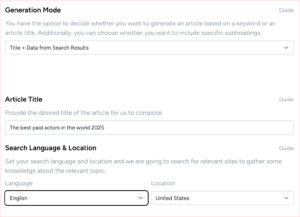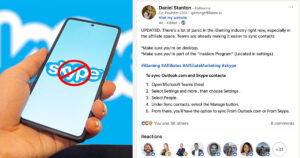In today’s digital-driven market, influencer marketing has become a cornerstone strategy for B2C companies aiming to amplify their reach and resonate with consumers on a personal level. It’s not just about the sheer volume of followers; the real magic lies in the authentic connections influencers cultivate with their audience, which can translate into significant gains for brands.
From boosting brand awareness to driving sales, the benefits of leveraging influencers for content distribution are manifold. This approach allows businesses to tap into pre-established communities, fostering trust and credibility more effectively than traditional advertising methods.
In this article, we’ll dive deep into how B2C companies can maximize their content distribution through strategic influencer partnerships, ensuring their messages aren’t just seen, but felt and acted upon by their target demographics.
Why B2C Influencer Marketing Matters
Influencer marketing can significantly boost your brand’s visibility and credibility among consumers. By partnering with influencers, you’re tapping into their engaged followers who trust their opinions. This can lead to higher brand recognition and potentially more sales. You’re not just advertising; you’re building relationships through authentic and relatable content.
Moreover, influencers can provide valuable content that resonates with their audience. They often craft unique, creative ways to showcase your products, making your brand more memorable.
It’s a cost-effective strategy too, as you can reach a large audience without the hefty price tag of traditional marketing campaigns. You’ll see a quicker return on investment, especially if you collaborate with influencers who align perfectly with your brand’s values and aesthetics.
Target Audience Identification
Identifying your target audience is crucial for effectively leveraging influencer marketing in the B2C sector. You need to understand who your customers are, what they value, and how they consume content. This isn’t just about demographics like age or location; it’s about digging into psychographics—interests, lifestyles, and behaviors.
You’ll tailor your strategies better when you know your audience’s preferences and pain points. Are they seeking entertainment, education, or a mix of both? What platforms do they frequent? Without this insight, you’re essentially shooting in the dark, wasting resources on campaigns that don’t resonate.
Remember, the more precisely you define your audience, the more targeted and effective your marketing efforts can be.
Choosing the Right Influencers
Once you’ve identified your target audience, selecting the right influencers is your next crucial step. It’s essential to choose influencers who resonate with your brand values and have a genuine connection with their followers. Their audience should mirror your target demographics to ensure your message reaches the right people.
You’ll want to assess the influencer’s engagement rate, not just their follower count, as a high engagement indicates active interaction and influence over their audience. Look for consistency in their content quality and the authenticity of their interactions.
Don’t hesitate to dive deep into their past collaborations to gauge how well they’ve aligned with other brands. Choosing the right influencer can significantly amplify your brand’s reach and credibility.
Creating Engaging Content
Once you’ve chosen the right influencers, creating engaging content that captivates and resonates with your audience is essential. It’s not just about the message itself, but how it’s delivered. You’ll want to tailor the content to reflect the unique voice and style of each influencer while ensuring it aligns with your brand’s values and goals. This approach helps the message feel authentic and relatable, increasing its impact.
Engage in brainstorming sessions with your influencers to generate ideas that spark excitement and interest. Encourage them to put their personal spin on the content, which can make it more appealing to their followers. Remember, authentic content often leads to higher engagement, so keep it real and true to both the influencer’s style and your brand ethos.
Leveraging Influencer Reach
Once you’ve partnered with influencers, harness their extensive reach to amplify your brand’s message across different platforms. Engage their followers by aligning your products with the influencer’s style and audience preferences. This strategy isn’t just about visibility; it’s about creating a connection. You’re tapping into a network that trusts and values the influencer’s opinions.
Use this opportunity to introduce your brand in authentic scenarios that resonate with the audience. It’s all about positioning—let the influencer showcase your products in a way that feels natural to their usual content. Remember, you’re not just reaching more eyes; you’re engaging with communities that are likely to be interested in what you offer, increasing the potential for conversion.
Amplifying Brand Awareness
Amplifying brand awareness involves strategically utilizing influencer partnerships to make your brand a household name. By aligning with influencers who resonate with your target audience, you’re not just introducing your brand; you’re embedding it into everyday conversations. It’s about creating a buzz that feels both organic and authentic.
When you leverage influencers, their followers see your brand as an extension of the influencer’s lifestyle, making it more relatable and trustworthy. This isn’t just about getting your logo out there; it’s about weaving your brand into the fabric of social media narratives.
You’ll find that as influencers share their genuine experiences with your products, their audience starts recognizing and remembering your -brand, setting the stage for deeper engagement.
Driving Conversions and Sales
Once you’ve caught your audience’s attention, it’s crucial to translate that interest into tangible sales and conversions. Influencers can directly drive your sales by showcasing how they use your products in everyday life. They create a sense of urgency with limited-time offers or exclusive discounts that you provide them. You’ll see your audience move swiftly from liking a post to clicking the buy button.
Encourage influencers to include clear calls-to-action in their content. Whether it’s swiping up to purchase or linking to your online store, these directives make the buying process seamless. Remember, the easier it is for followers to make a purchase, the more likely they will.
Harness the power of influencer reach to not just share your story, but also boost your bottom line.
Measuring Campaign Success
To effectively gauge the impact of your influencer marketing efforts, it’s crucial to measure key performance indicators (KPIs). You’ll want to track metrics like engagement rate, reach, and the number of conversions directly attributed to each campaign.
Engagement rate reveals how actively involved the audience is with the content, while reach shows the extent of your audience size. Also, pay close attention to the conversion rates that tell you how many viewers are taking the desired action, whether it’s making a purchase, signing up for a newsletter, or downloading a guide.
By analyzing these KPIs, you’ll understand which influencers drive the most value and which strategies resonate best with your target audience, enabling you to optimize future campaigns for better results.
How can small businesses with limited budgets effectively utilize influencer marketing?
To make the most of influencer marketing on a tight budget, focus on micro-influencers with high engagement rates.
Craft authentic partnerships, offer unique promotions, and leverage user-generated content to maximize impact without breaking the bank.
What are some legal considerations or regulations to be aware of when engaging with influencers?
When engaging with influencers, be mindful of legal considerations like transparency in sponsored content and compliance with FTC guidelines.
Ensure clear contracts are drafted, outlining deliverables and compensation to avoid potential legal issues or disputes.
Are there specific tools or platforms that can help in measuring the ROI of influencer marketing campaigns?
To measure the ROI of influencer campaigns, consider using tools like Google Analytics, social media insights, or specialized platforms such as Influencity or Upfluence.
These resources offer valuable data to assess campaign performance effectively.
Conclusion
In conclusion, utilizing influencer marketing for B2C content distribution offers numerous benefits. By leveraging the reach and credibility of influencers, brands can effectively engage with their target audience, increase brand awareness, and drive conversions.
This strategy allows for authentic and relatable content to be shared, ultimately leading to improved customer trust and loyalty.
Embracing influencer marketing in your content distribution efforts can undoubtedly enhance your overall marketing success in the B2C space.





